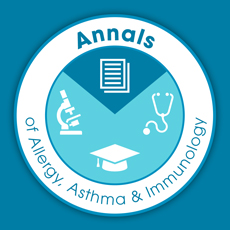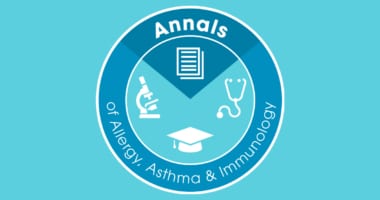 As the month of October winds down, hopefully everyone has had an opportunity to read and utilize the information from the many articles in this month’s Annals of Allergy, Asthma and Immunology. I want to call to attention to two articles that are of very pragmatic value for practicing clinicians.
As the month of October winds down, hopefully everyone has had an opportunity to read and utilize the information from the many articles in this month’s Annals of Allergy, Asthma and Immunology. I want to call to attention to two articles that are of very pragmatic value for practicing clinicians.
The first is a review of current knowledge about idiopathic CD4 lymphocytopenia, authored by Hale Yarmohammadi, MD, MPH, and Charlotte Cunningham-Rundles, MD, PhD. In general allergy-immunology practice, many have at one time or another been referred a patient whose CD4 count has been assessed and found to be low. These patients are typically screened (sometimes repeatedly) for HIV and, when found negative, are referred to us for clinical opinions about risk and/or management decisions. This paper presents a 21 year experience of the authors in terms of clinical presentations and treatment strategies. While, as the authors clearly point out, the treatment options are limited, the information and background presented can assist the reader in formulating up-to-date opinions and recommendations to be shared with patient, family and referring provider.
Another useful article is a thought provoking review of the status of epinephrine auto injector development written by Paul Greenberger, MD, FACAAI and colleagues. They described the perceived under diagnosis of anaphylaxis in young children and management issues particularly related to epinephrine autoinjectors especially in infants and toddlers. Issues such as ease of use and potential for injury due to dose delivered, needle length, and more are discussed. This information is presented in the context of the overall management strategies for anaphylactic emergencies. Finally, the authors opine about future development goals for epinephrine autoinjectors for this subpopulations of patients who experience anaphylaxis.
I hope you have enjoyed the October issue of Annals and we look forward to bringing you next month’s issue soon. I look forward to seeing many of you at our Annual Meeting in Boston. I hope you will feel free to stop me and share your comments about how we can make the Annals better meet your practice needs.
Gailen D. Marshall, Jr., MD, PhD, FACAAI
Editor-in-Chief

